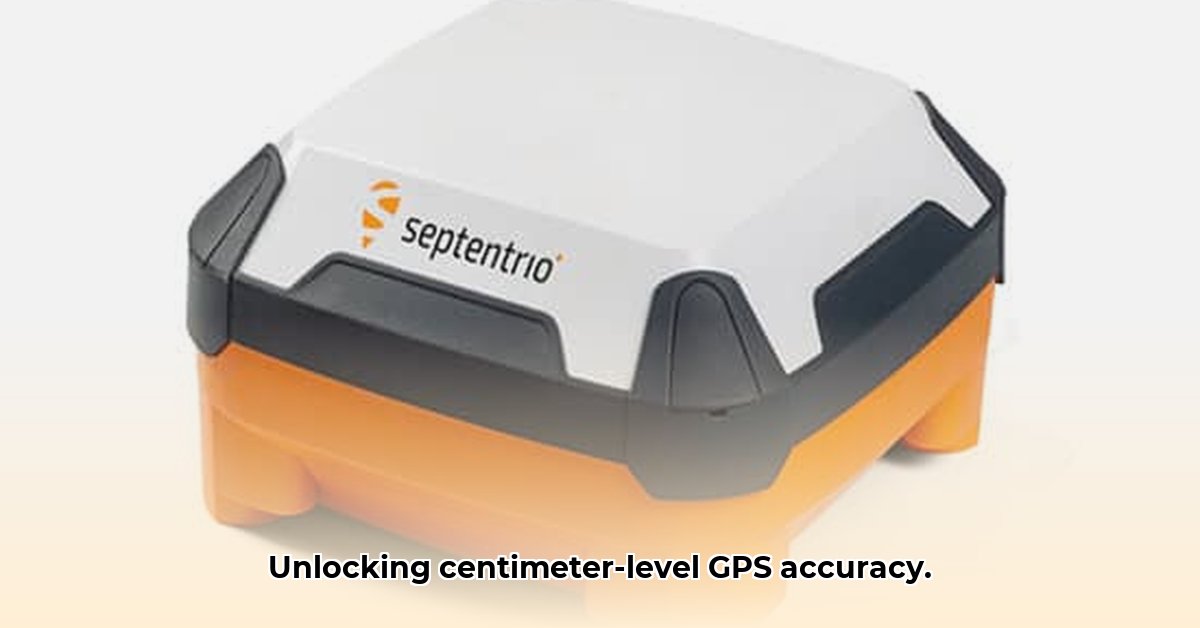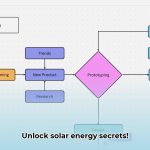Are you seeking unparalleled accuracy in location data? The Septentrio AntaRx-S3 smart antenna might be the answer. This in-depth review explores the device’s capabilities, positioning it within the current market. We’ll walk you through setup, provide optimization strategies, and examine its various applications across industries. Consider this a complete resource covering everything from technical specs to real-world deployments and troubleshooting, so you can determine if the AntaRx-S3 is right for you and how its centimeter-level precision can be best leveraged.
AntaRx Precision: Achieving Centimeter-Level GNSS Accuracy
The AntaRx-S3 is more than a GPS receiver; it’s a robust GNSS positioning solution that utilizes real-time kinematic (RTK) technology to deliver accurate positioning data. Let’s examine the features that are making it a preferred option for sectors requiring pinpoint precision and how it stands out within the world of GNSS technology and surveying solutions.
Unmatched Ruggedness: Built to Last
The AntaRx-S3 is built for challenging environments. Encased in a high-strength polycarbonate housing with an IP69K rating, it offers protection against dust ingress, high-pressure water exposure, and mechanical impacts. As a result, it can reliably operate within harsh environments, like active construction sites, while maintaining its accuracy. Septentrio’s LOCK+ technology further enhances reliability by dynamically adjusting receiver parameters, assuring continuous precision despite vibrations and shocks.
Accuracy That Is Off the Charts
This smart antenna provides RTK positioning with centimeter-level accuracy. Septentrio has grown to be a leader in the GNSS market through consistent innovation. The AntaRx-S3 showcases this with its high end engineering. This accuracy changes how time-consuming and error-prone tasks work across surveying, mapping, and precision agriculture. Centimeter-level accuracy enables very precise planting and harvesting in precision agriculture, improving yields and reducing waste.
Conquering the Signal Chaos: Smart Technology
The AntaRx-S3 employs intelligent algorithms (IONO+, APME+, and AIM+) to counteract signal disruptions resulting from atmospheric ionization (IONO+), multipath reflections (APME+), and intentional or unintentional jamming (AIM+). This design ensures dependable data delivery, providing uninterrupted performance even in difficult conditions. The AIM+ technology actively recognizes and mitigates interference, ensuring uninterrupted and reliable GNSS signals, even amidst jamming attempts.
Versatility: Adapting to Varied Applications
The AntaRx-S3’s supports single or dual antenna setups, making it configurable to specific application needs. For users requiring higher accuracy, the GNSS/INS (Inertial Navigation System) model combines data from GNSS and inertial sensors. A built-in 4G cellular modem enables remote access to correction data, streamlining workflows. The antenna’s orientation and pitch data also increases applicability.
The web interface offers user-friendly setup and monitoring, appealing to both seasoned professionals and new users. This adaptability makes it an invaluable tool across a wide array of applications.
Who Benefits? A Wide Range of Industries
The AntaRx-S3’s feature set offers benefits to a multitude of sectors:
- Equipment Manufacturers: Integration into designs, this GNSS antenna lowers maintenance costs and improves market positioning.
- Surveyors/Mappers: Faster data collection increases efficiency and promotes higher data quality for increased competitive advantage.
- Agriculture: Enhanced planting, fertilizing, and harvesting leads to profitability, better resource management, and more sustainable farming.
- Logistics: Efficiency and cost reduction contribute to a more robust supply chain.
Navigating Potential Challenges: Risk Mitigation
The AntaRx-S3 is designed for durability, so understanding potential risks and mitigation strategies is still important:
| Feature | Potential Risk | Mitigation Strategy |
|---|---|---|
| GNSS Signal Interference | Loss of signal; inaccurate readings | Intelligent algorithms (IONO+, APME+, AIM+), redundant systems, and careful site selection. |
| Cellular Connectivity | Interruption of correction data | Backup communication methods and robust site surveys. |
| Hardware Failure | Device malfunction | High-quality components, rigorous testing, warranties, and service packages. |
| Software Glitches | Errors or unexpected behavior | Regular software updates, thorough testing, and quality control procedures. |
Legal and Regulatory Considerations
GNSS technology must be used in compliance with frequency regulations and communication standards. When working with autonomous systems, adherence to safety regulations is vital. Prior to deployment, one should always conduct research to ensure compliance with local laws.
The AntaRx-S3 exemplifies GNSS technology because it combines robustness, precision, and versatility. As technology progresses, the AntaRx-S3 stands as an example of achievable technology.
How to Mitigate GNSS Signal Interference with Septentrio AntaRx-S3
Achieving centimeter-level precision with the Septentrio AntaRx-S3 involves addressing GNSS signal interference from sources like cellular towers and Wi-Fi routers, which can compromise positioning accuracy. The AntaRx-S3 has a suite of features that helps counter this issue.
Understanding GNSS Interference
GNSS signals are susceptible to interference from cellular networks (GSM, LTE), FM radio broadcasts, and Wi-Fi, which can lead to positioning inaccuracies.
Septentrio’s Solution: AIM+ Technology
The AntaRx-S3 leverages Septentrio’s Advanced Interference Mitigation (AIM+) technology, which identifies and mitigates various types of interference using approaches like adaptive notch filtering and wideband interference suppression.
- Adaptive Notch Filtering: Notch filters remove specific frequencies that cause interference.
- Wideband Interference Mitigation: A solution that addresses broader interference patterns.
How to Use AIM+ Effectively: A Step-by-Step Guide
- Identify the Interference: Use the AntaRx-S3’s spectrum analyzer to visualize the GNSS signal environment and pinpoint problem frequencies.
- Configure AIM+ Parameters: Tailor AIM+ settings using the AntaRx-S3’s software; consult Septentrio’s documentation for guidance.
- Monitor Performance: Consistently monitor the GNSS receiver’s output, fine-tuning AIM+ settings to maintain accuracy.
Regular monitoring and strategy adjustments is the best way to ensure precision.
Key Takeaways:
- The AntaRx-S3’s AIM+ reduces interference, crucial for achieving centimeter-level accuracy.
- Mitigating interference includes using the spectrum analyzer and configuring AIM+.
- Consistent monitoring and AIM+ adjustments are needed to maintain performance.
- Proactive interference identification and mitigation are essential for reliable results.
https://customersupport.septentrio.com/s/topic/0TO4y000000U6STGA0/interference
Beyond the Basics: Advanced Considerations
For optimal performance, consider antenna placement, environmental factors, and regular maintenance:
- Antenna Placement: Minimizes multipath errors.
- Environmental Factors: Obstacles can weaken signals.
- Regular Maintenance: Keep the AntaRx-S3’s firmware up to date.
GNSS signal interference can be understood and mitigated, so the full potential of the AntaRx-S3 systems can be unlocked for accurate positioning. Remembering to monitor and adapt enhances centimeter-level precision.
AntaRx-S3 in Challenging Agricultural Environments: Precision Farming Applications
Key Takeaways:
- The Septentrio AntaRx-S3 smart antenna provides centimeter-level accuracy for precision farming.
- Its design allows use in agricultural conditions.
- Algorithms minimize the impact of signal interference.
- Adaptable configurations suit needs.
- Integrates with existing systems.
Accuracy and Reliability in the Field
This GNSS boasts RTK positioning accuracy. This is needed for variable rate fertilization, automated spraying, and vehicle management. It helps in the optimization of resource use and increased yields. The IP69K-rated design handles dust, mud, and vibrations. The AntaRx-S3 is designed for use in rough conditions.
Signal Processing: Conquering Interference
Septentrio’s algorithms
- Wind Power Energy Advantages: Clean, Domestic And Cost-Effective Power - November 12, 2025
- Wind Turbine Pieces: Examining The Industrys Future Growth - November 9, 2025
- Wind Turbine Installation: Building the Future of Energy - November 7, 2025
















